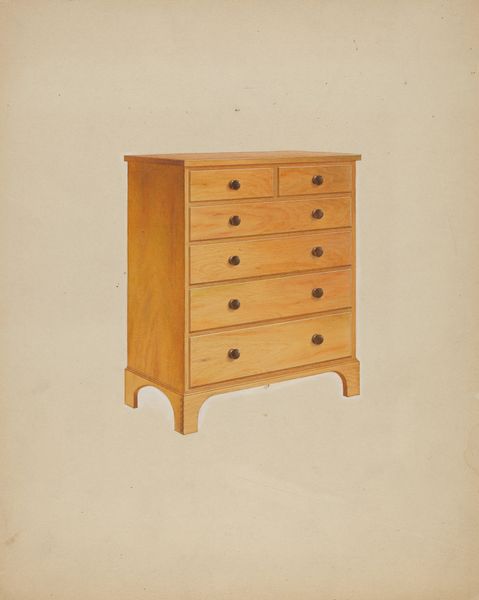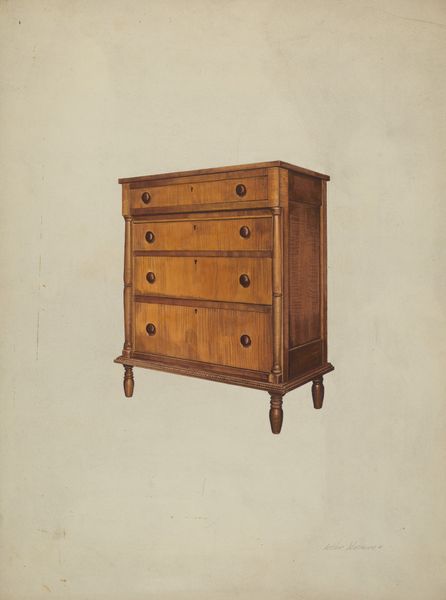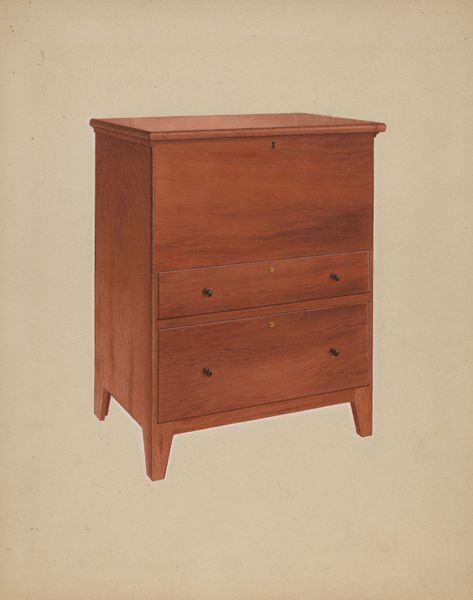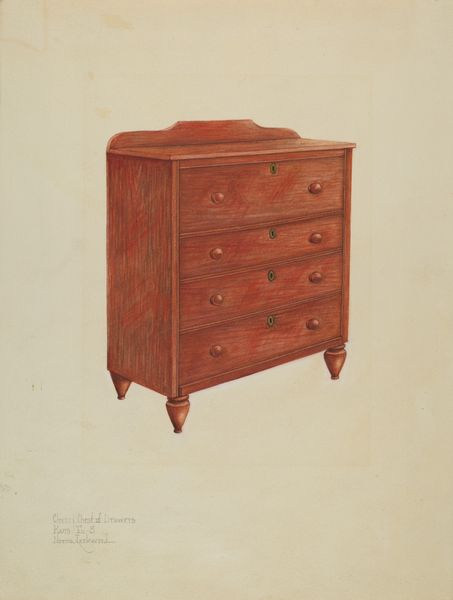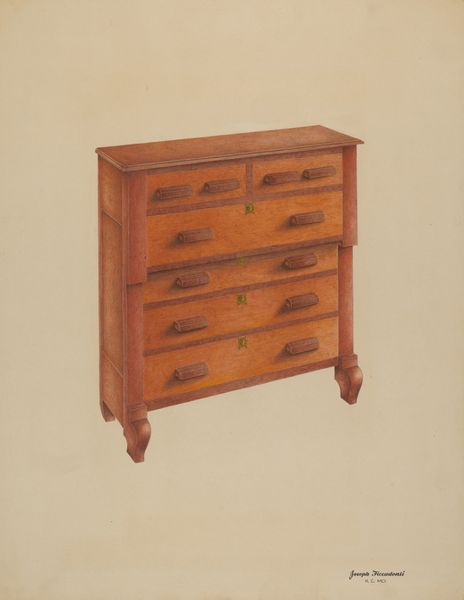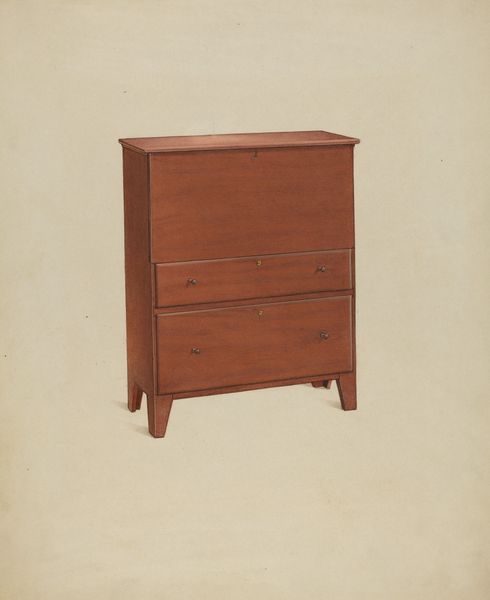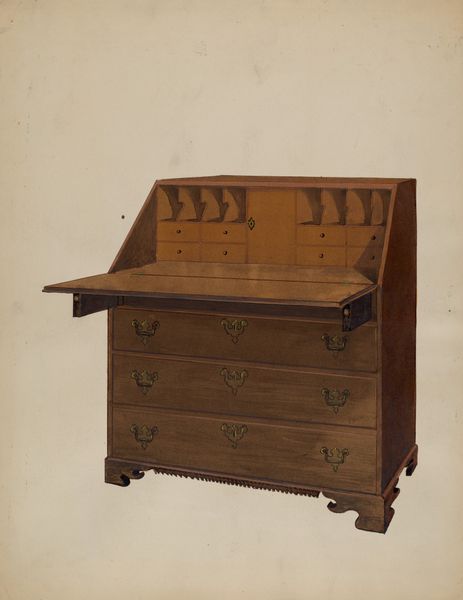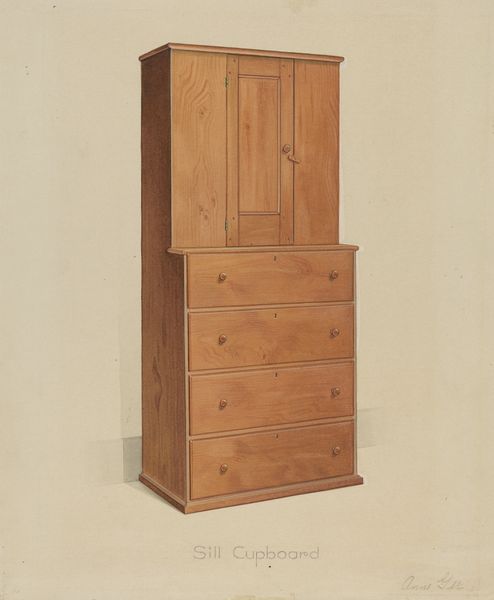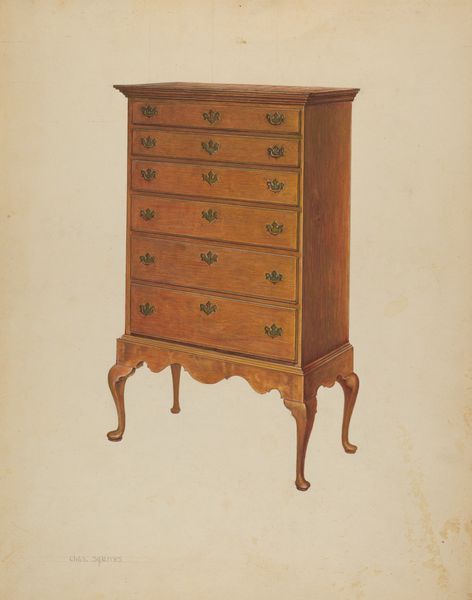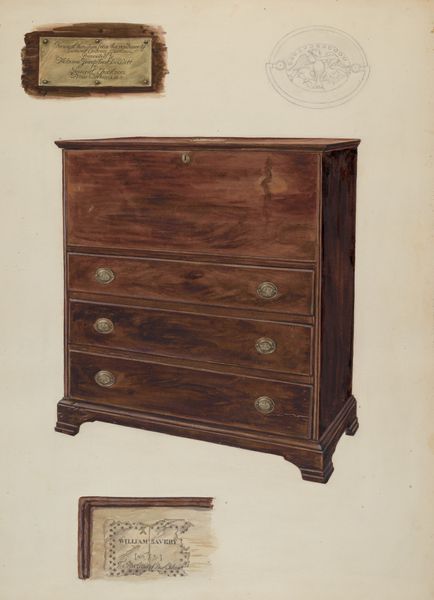
drawing
#
drawing
#
charcoal drawing
#
geometric
Dimensions: overall: 35.4 x 25.1 cm (13 15/16 x 9 7/8 in.) Original IAD Object: none given
Copyright: National Gallery of Art: CC0 1.0
Editor: So, this is Fred Weiss's "Scrutoir or Butler's Desk," from around 1936. It's a charcoal drawing. I'm struck by the geometry of it, almost like a building. How do you interpret this work, especially considering its time period? Curator: It's fascinating how you see a kind of architectural quality to it. I'm drawn to consider it as a quiet commentary on domesticity and labor in the 1930s. Desks like this were often associated with managing household affairs, typically a woman's domain. Editor: So you're saying the desk becomes symbolic of women's work? Curator: Precisely! During the Great Depression, when many women entered the workforce out of necessity, this piece, created by a male artist, could be interpreted as a silent nod to women’s changing roles and their contributions to family survival. Consider the tension between its function and its form: is it a beautiful object, or a symbol of constrained domestic roles? Editor: I never thought of it that way. I was focused on its design and materials. But thinking about its societal implications makes it much more powerful. Curator: The choice of charcoal also matters. It lends the drawing a tactile quality, a starkness. Weiss isn’t glorifying domestic life but perhaps highlighting its realities, the constant labor implied within. This challenges us to ask: who is this artwork *for*, and what narrative does its creation uphold or subvert? Editor: That's given me a whole new way to view not just this piece, but others from the same period. The desk now feels like a complex emblem. Curator: Exactly! Context transforms the object, inviting us to question our assumptions about gender, work, and artistry.
Comments
No comments
Be the first to comment and join the conversation on the ultimate creative platform.
